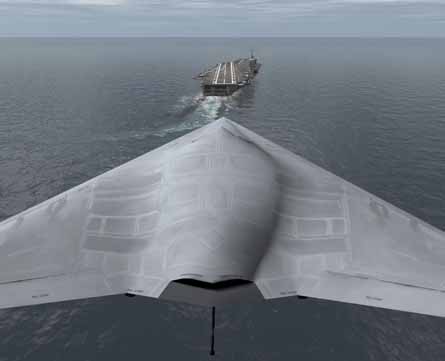Bidder confident that work on already half-completed X-47B vehicle will give it an edge over rival Boeing
With proposals submitted last week for the US Navy's $1 billion unmanned combat air system demonstrator programme, Northrop Grumman believes it has an advantage over its rival Boeing because its already half-completed X-47B was designed from the outset for carrier-based operation.
Boeing has proposed the X-45N, a carrier-capable derivative of the land-based X-45C built, but not flown, under the US Air Force-led Joint Unmanned Combat Air System programme, which was cancelled last year.
Northrop started building two X-47B demonstrators under the J-UCAS programme, and continued work with company funding after it was cancelled, says Scott Winship, UCAS-D programme manager. The first aircraft is in final assembly and, if Northrop wins, would fly in November next year, he says.
Winship says Northrop would complete the demonstration objectives by 2011, two years ahead of the US Navy's schedule. "We would save a lot of money by not paying for those extra two years," he says. The navy plans to begin system development and demonstration (SDD) of an operational UCAS around 2013.
The UK, which joined the J-UCAS programme, is part of UCAS-D, says Winship, and is expected to provide some funding for demonstration under its Project Churchill. If it wins, Northrop is to bring UK industry partners on to the X-47B, he says. Lockheed Martin is already a team-member.
|
|---|
Boeing's X-45N is a derivative of a land-based vehicle and has yet to fly |
Northrop is proposing to complete both X-47Bs for the UCAS-D programme. The first would be the primary vehicle for the carrier-based demonstration, while the second would be a "mule" for testing additional technologies. "I'd like to get a different, more fuel-efficient engine in there," says Winship.
The first X-47B is powered by an unreheated Pratt & Whitney F100-220U, and has a simplified exhaust to save money. The 45,000lb (20,500kg)-class vehicle can carry two 900kg weapons internally, has a 5,200km (2,800nm) range or 7h endurance and is equipped for both boom and hose-and-drogue aerial refuelling.
But the focus of the US Navy demonstration is to prove an autonomous unmanned vehicle can operate on and around a carrier without compromising manned aircraft operations, says Winship, and that a stealthy tailless aircraft can land on a carrier.
"The hardest challenge is integrating with manned vehicles, but there would be no demonstration if we knew we could land a tailless aircraft on a carrier deck," Winship says. "If it was manned it couldn't be done. What allows us to do it is being unmanned, with 110Hz computers that can counter gusts and burbles instantly."
Source: Flight International




















